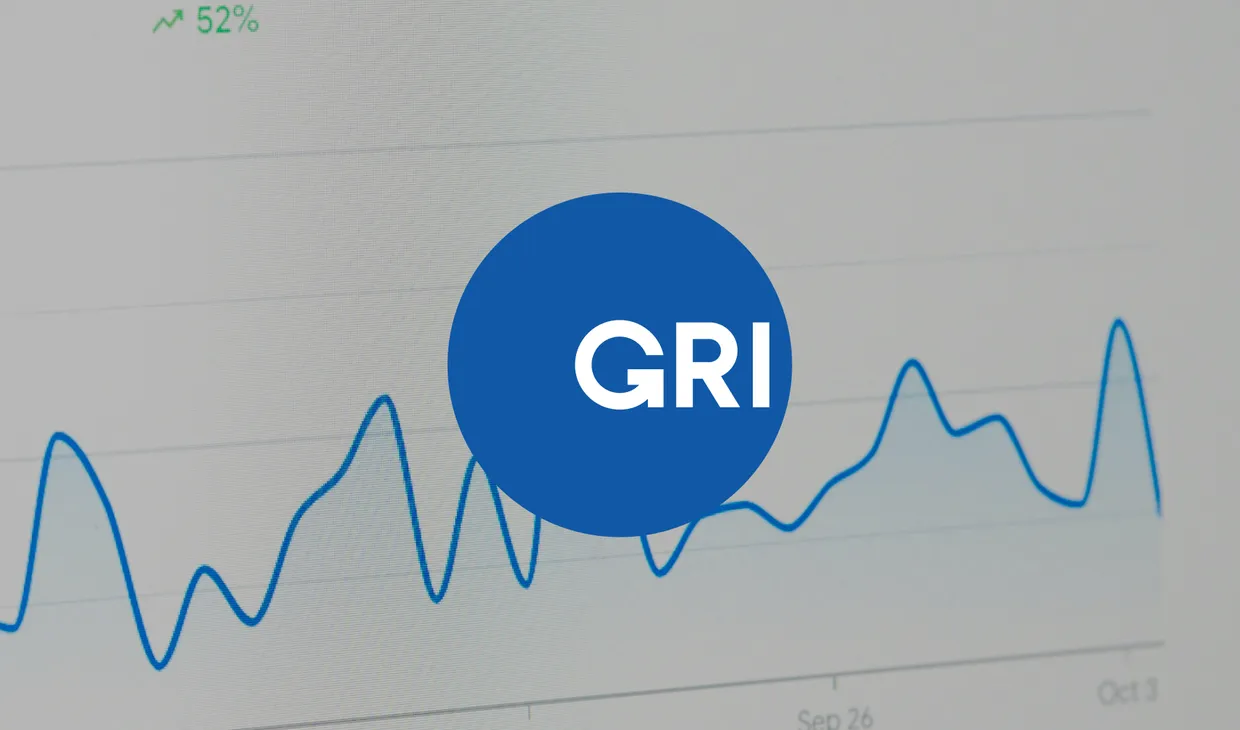What kind of data does GRI reporting require?
The GRI Standards provide a standardized approach to sustainability reporting, enabling organizations to develop consistent, comparable, and credible disclosures. These standards are regularly refined through a rigorous review process to ensure their continued relevance and effectiveness.
They are organized into three series:
- GRI Universal Standards – These cover core principles such as human rights, materiality, and management disclosures.
- GRI Sector Standards – Tailored guidance for specific sectors with unique sustainability challenges, such as oil and gas, agriculture, or mining.
- GRI Topic Standards – Specific environmental, social, and governance topics (e.g., emissions, waste, labor practices).
So, what data do you need to gather?
1. Organizational context and governance
Start with a clear description of your reporting organization’s structure, activities, and governance model. You must provide details that allow stakeholders to understand your internal operations and accountability. You’ll need:
- Legal entity and operating locations
- A thorough value chain description (including suppliers and partners)
- A governance framework, including board structure and roles
Organisations are expected to ensure the accuracy and reliability of the data they report.
2. Material topics and stakeholder engagement
GRI requires that you define “material topics”—the sustainability issues most relevant to your business and stakeholders. A materiality assessment is required to identify and prioritize these topics, ensuring that your sustainability reporting aligns with stakeholder expectations and regulatory requirements. Double materiality is increasingly important, as organizations must assess both the impact of sustainability issues on the business and the business’s impact on society and the environment. Collect data from:
- Stakeholder surveys or consultations (companies should assess risks, opportunities, and impacts as part of the stakeholder engagement process)
- Risk assessments
- Strategic planning sessions
You’ll also need to document the process used to identify these topics and explain how stakeholder input was considered.
3. Environmental data
Environmental disclosures under GRI are among the most technical. GRI requires organizations to disclose their environmental impacts and measure environmental performance. Be ready to report on:
- Greenhouse gas (GHG) emissions (Scopes 1, 2, and possibly 3)
- Energy consumption and sources
- Water use and discharge
- Waste generation and treatment
- Biodiversity impacts
For each, you’ll need quantitative metrics and explanations of methodologies, such as emissions calculations or energy intensity ratios. These metrics are used to evaluate environmental performance over time.
GRI covers a wide range of social topics and requires organizations to disclose their social impacts, including effects on human rights, labor practices, and community well-being. This includes:
- Workforce composition (age, gender, employment status)
- Occupational health and safety (injuries, lost days)
- Labor rights and collective bargaining
- Diversity, equity, and inclusion metrics
- Human rights practices
This data often lives in HR systems, safety logs, or compliance tools—so coordination across departments is key.
5. Economic disclosures
GRI also expects companies to report on their economic impacts, including how their activities affect stakeholders and the broader economy. This includes economic performance indicators such as:
- Direct economic value generated and distributed, including profit as a key indicator of financial health
- Financial assistance from governments
- Anti-corruption measures
- Local hiring and procurement practices
How can ESG management software support you?
Collecting and managing GRI data manually—often across dozens of business units and systems—is a massive undertaking. This is where ESG management software plays a pivotal role. ESG software helps organizations manage sustainability information and ensure the accuracy of the information reported. These platforms act as digital building blocks for streamlined, scalable, and reliable sustainability reporting. They support transparent reporting and facilitate the creation of sustainability reports aligned with GRI standards.
Automating data collection and validation
GRI’s reporting guidelines require consistent, traceable, and accurate data. ESG software platforms help automate data collection from energy meters, HR platforms, financial systems, and supply chain tools. This automation reduces errors, speeds up reporting cycles, and ensures your data aligns with third party assurance expectations. ESG software can also facilitate verification processes by providing reliable data for independent third-party audits, enhancing the credibility and accuracy of your sustainability disclosures.
Instead of chasing spreadsheets or reconciling manual inputs, your team can spend time analyzing insights and planning improvements.
Managing complex reporting structures
Many businesses report across multiple entities, countries, or business lines. ESG software centralizes data and applies standard logic to ensure consistency. This is critical when applying the GRI reporting initiative across an international business with diverse operations.
The software can also map GRI standards to other frameworks like the ISSB, CSRD, or TCFD, helping you meet multiple regulatory and voluntary standards without duplicating work.
Tracking progress and enabling strategic decisions
The best ESG platforms do more than store data—they help you act on it. Through dashboards, alerts, and scenario analysis tools, software platforms empower you to:
- Monitor KPIs against targets, helping you focus on improving your sustainability performance
- Forecast the impact of business decisions on ESG outcomes
- Improve risk management through proactive intervention
This strategic lens transforms sustainability reporting from a compliance task into a driver of competitive advantage.
Enhancing transparency and credibility
To become a global leader in sustainability, transparency and credibility are non-negotiable. ESG software supports audit trails, documentation of methodologies, and third party assurance processes that build trust with stakeholders. Independent evaluation of sustainability reports enhances their credibility and increases stakeholder trust by assuring the accuracy and reliability of the information presented.
Many platforms also offer tools to generate and publish GRI-aligned reports, making it easy to communicate your performance with clarity and professionalism.
What should your next steps be?
- Identify your material topics – Engage stakeholders and prioritize the most relevant ESG risks and opportunities.
- Map your data sources – Audit where key metrics reside and how often they’re updated.
- Evaluate ESG software solutions – Look for platforms with built-in GRI reporting guidelines, integrations, and reporting flexibility.
- Set internal roles and responsibilities – Ensure teams know what data they’re responsible for and how to maintain its quality.
- Provide training for staff – Offer training on GRI standards and reporting practices to build capacity and ensure accurate, consistent disclosures.
- Plan for assurance and publication – Whether you pursue third party assurance or publish self-declared reports, define your timeline and process early.
Why getting GRI data right matters
GRI reporting isn’t just about meeting a standard—it’s about understanding and improving how your business impacts the world. By supporting sustainable development, GRI reporting helps organizations create sustainable value and unlock positive change for society and the environment. It’s the backbone of your sustainability reporting strategy and a crucial part of operating in environmentally responsible economies.
With accurate data, smart systems, and strategic clarity, you can go beyond compliance. Understanding your sustainability impacts is key to driving positive change and achieving long-term sustainability goals. You can build trust, reduce risk, and unlock long-term value.



